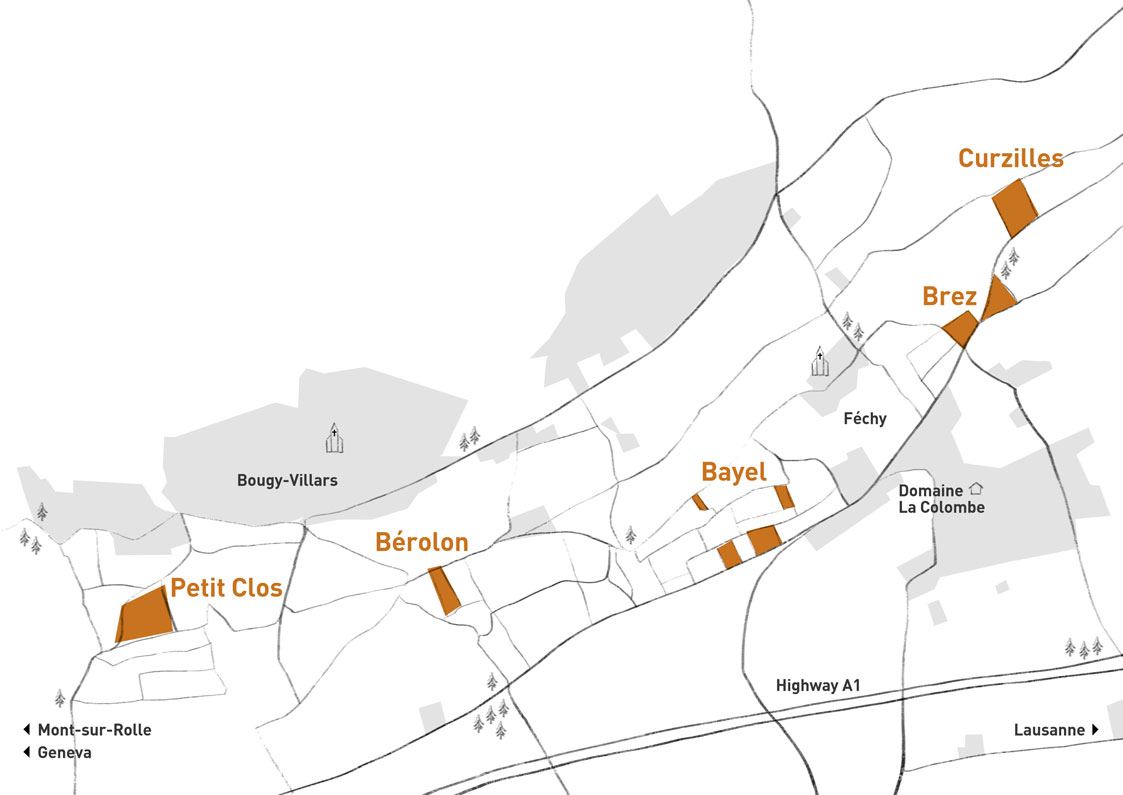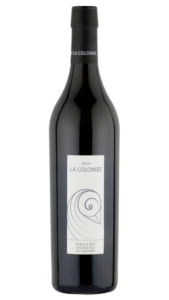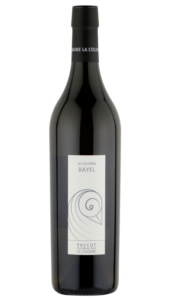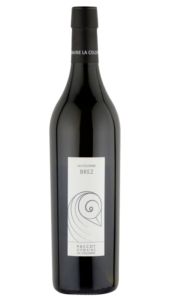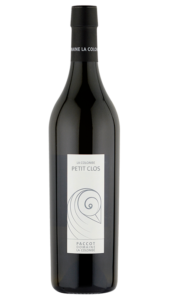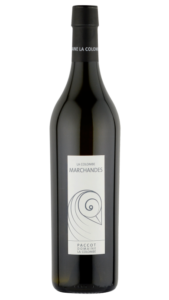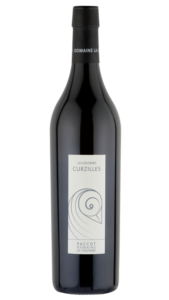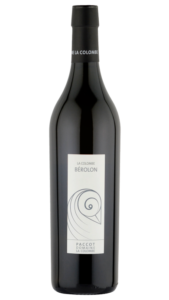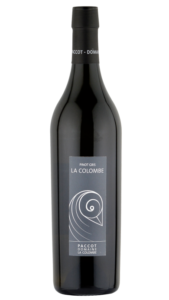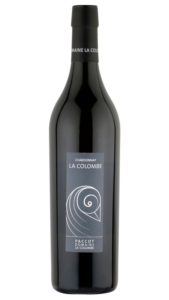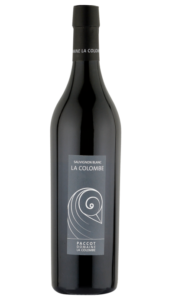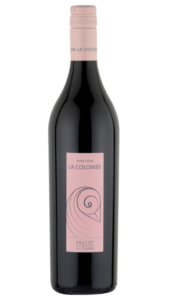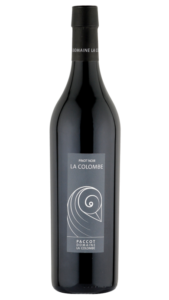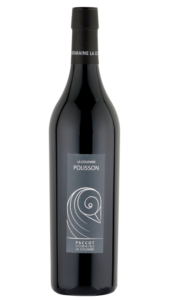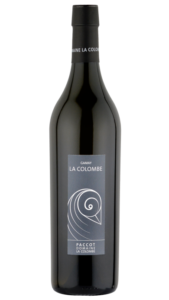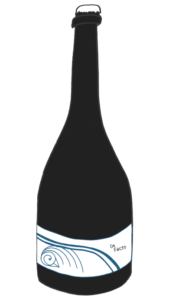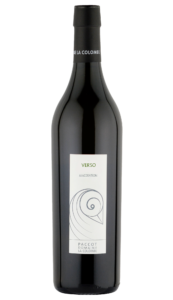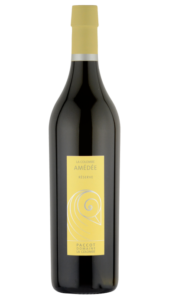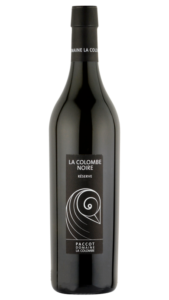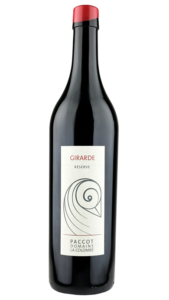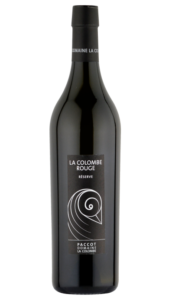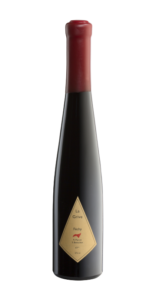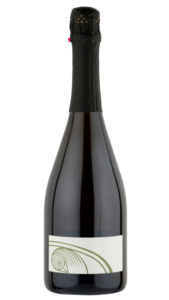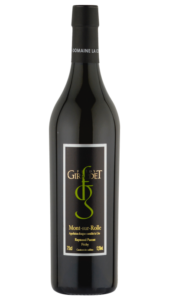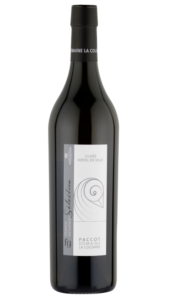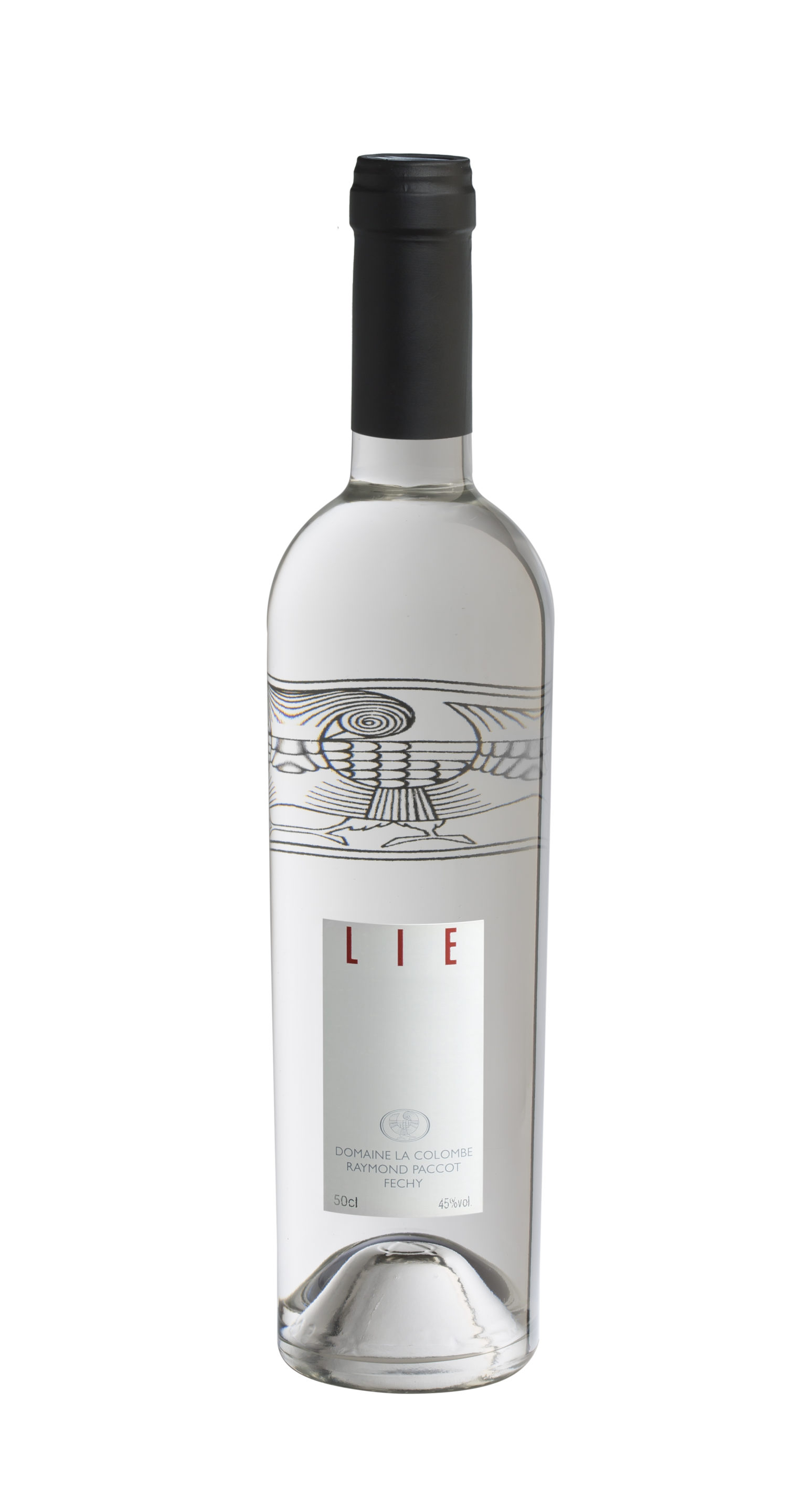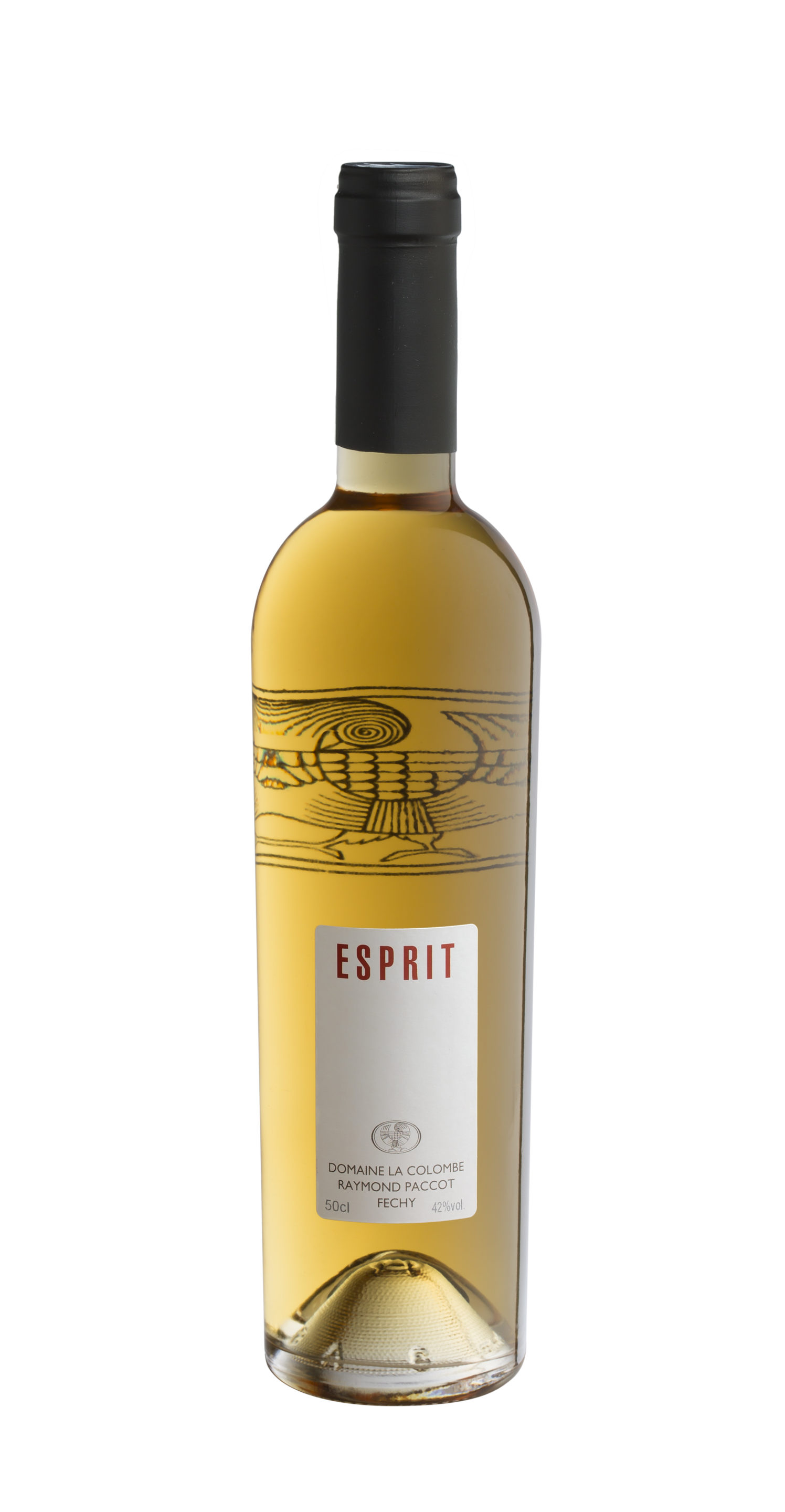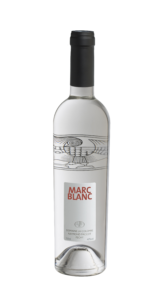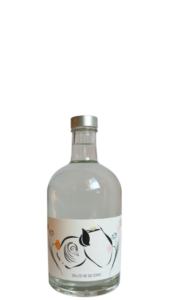TERROIR
The signature of a place
Terroir is the combined energy of sky and soil. This is where this quiet strength that the winemaker, servant and interpreter, must reveal without ever betraying or hiding it. This patient approach continues during maturing, then in bottle. These fresh and alive wines develop over the years a complexity made of elegance and personality.

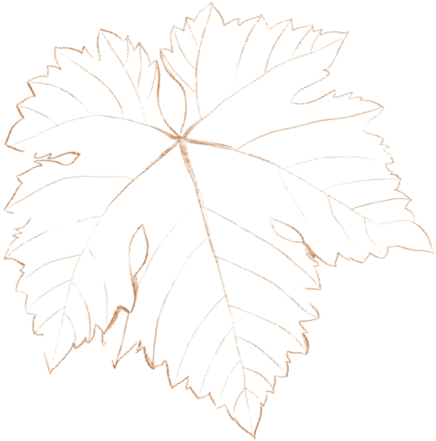
If Chasselas
did not exist …
it would be deeply missed by the Vaudois soul – just as its quite simply remarkable qualities would be missed by genuine wine lovers. What other variety embodies the complexity, refinement and retention capacity to express the true character of our terroirs ? Chasselas’s characteristics can be quite difficult to decipher, and even more so in hurried times like nowadays when we are used to things being fast and flashy. Chasselas is the antithesis of that :
you have to know how to
listen to it in order to
be able to taste it properly
and to fully appreciate
its subtleties.
What tends to happen is that it grows on you, precisely because of the sense of peaceful pleasure – tonic yet calm – that comes with drinking it …
EXPRESSION
The flavours’ song
Domaine La Colombe cultivates several grape varieties in addition to Chasselas. The harmony of the place and the variety allows each plant to express the full extent of its character.
In the cellar, the limit of the intervention is the research for the authentic expression. Personality grape varieties, fullness of aromas here offer a perfect balance delivering a full and immediate pleasure.
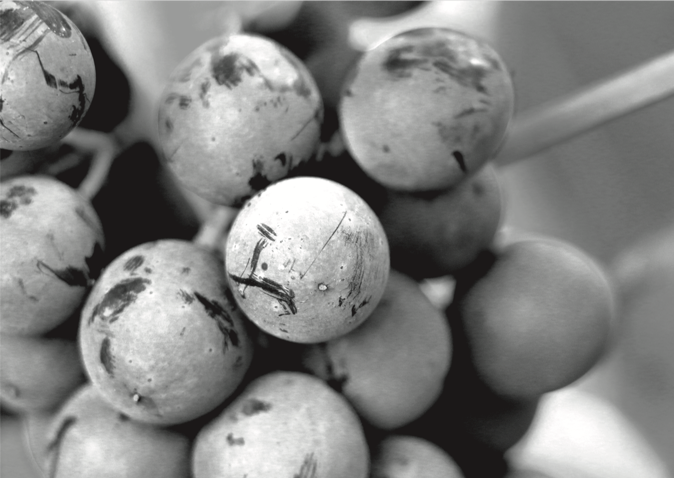
RÉSERVE
The patina of time
Very low yields, a selection of old vines, prolonged maturation and bottled aging prior to placing on the market contribute to the emergence of refined and refined wines. The quest for this elusive perfection is at the heart of our business: these exceptional wines confirm our faith in nature and in life. Beyond a success, a reward!
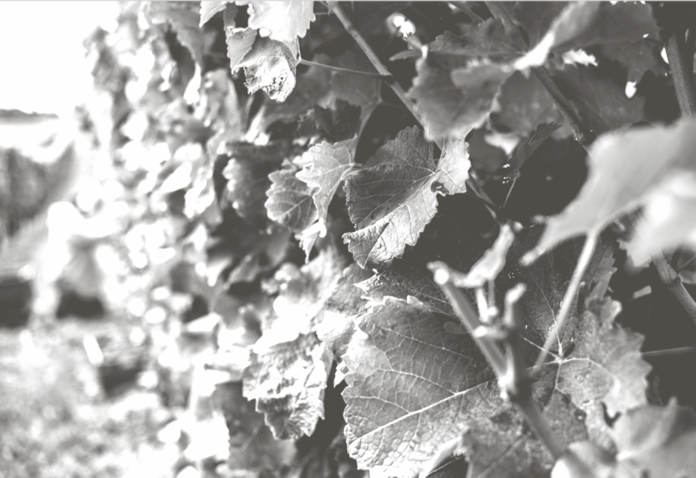
ÉTOILÉ
Different blends according to the vintage created with the Hôtel de Ville Crissier
9 stars box
The idea was born in the 1980s when Frédy Girardet and Raymond Paccot met. An encounter between limestone terroirs and chef’s honed knife that led to the design of a new wine, streamlined and with great class. The wine is seductive by its smoothness but also appreciated for its great gastronomic flexibility. This complicity continues with Franck Giovannini of the Restaurant de l’Hôtel de Ville in Crissier, who continue to create his own cuvée, in a kind of direct link, from the land to the table.
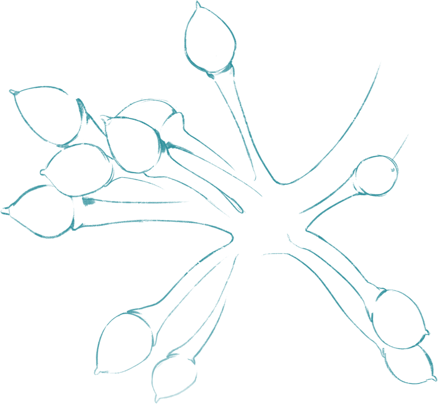
ALCOOL
In addition to our range of wines, to enjoy as an aperitif and at the table, Domaine La Colombe also offers some flasks to open after the meal, when the conversation takes its ease and the evening continues …
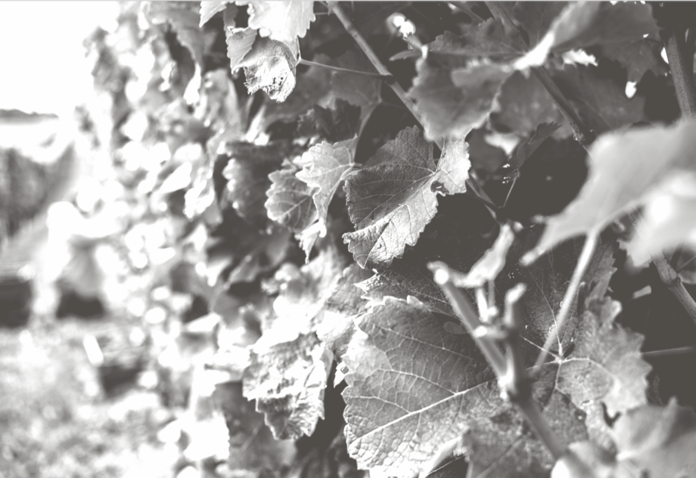
vintages

Vendanges 24 septembre 2007
Au contact de la nature, les années se suivent… et ne se ressemblent pas ! Ce nouveau millésime – plus que prometteur – nous a tenu sur le qui-vive de janvier à octobre. En un mot, c’est tout simple : « Le 2007, c’est tout le contraire du 2006 ! »
Après un repos hivernal perturbé par le soleil et des températures presque estivales, la vigne a démarré son cycle végétatif au début du mois d’avril, soit une avance de trois semaines par rapport aux dates habituelles.
Puis les pluies fréquentes de mai, juin et juillet ont considérablement augmenté les risques de développement du mildiou, champignon microscopique qui se propage sous les feuilles lorsqu’il fait chaud et humide. Mais nous avons pu échapper à ces maux sans trahir la culture biodynamique, avec nos traitements doux et respectueux, souvent à base de plantes.
Et alors que nous nous préparions à une récolte précoce et précipitée, est arrivé l’inespéré : un automne exceptionnel, avec du soleil, un temps sec, et surtout, la bise qui a séché les baies ! A partir de début septembre, nous avons pu modifier complètement le scénario et retarder le début des vendanges de 15 jours : des conditions rêvées pour ne pas se presser, attendre que chaque terroir, chaque cépage, arrive à sa pleine maturité, afin de cueillir des raisins dorés et bien sucrés.
Tout est bien qui finit bien ! Ou plutôt, qui commence bien : avec une récolte aussi saine, les conditions de vinification ont été quasi idéales, les fermentations lentes étant encore favorisées par la relative fraîcheur de la fin de l’année. Au rendez-vous, des expressions de terroir encore discrètes, mais aux caractères bien affirmés et solides.
Bref… Tout nous laisse penser que les 2007 seront des vins charnus, racés, avec un bel équilibre entre fruit et structure…

Vendanges 10 octobre 2008
Quel privilège d’accompagner la nature ! Le millésime 2008 laissera des traces dans les mémoires vigneronnes, non pour ses crises bancaires, mais pour les émois que le climat a suscités.
A défaut d’indices et d’index boursiers, voici donc quelques-unes de nos émotions climatiques, après tout, chacun son métier !
- Début avril, la neige s’attarde, et la vigne prend son temps pour débourrer et montrer ses premières pousses
- Le mois de mai apporte heureusement la chaleur qui manquait jusque-là. Un mois qui sera sec, le plus sec de toute la phase végétative, avec le mois de juin.
- Les grappes fleurissent autour du 20 juin, en retard sur la moyenne des dix dernières années…
- Ensuite, malgré un temps changeant, la période de forte croissance de la vigne se caractérise par des quantités de pluie inférieures à la norme saisonnière, excepté durant juillet. Contrairement à l’impression qu’il peut laisser, l’été se montre plus chaud et sec que la référence. Mais, en raison de l’alternance de pluie et de soleil, le danger de maladie de la vigne demeure bien réel !
- Début septembre, les averses font craindre le pire. Par bonheur, dès le milieu du mois, s’installe un temps sec accompagné d’une forte bise, procurant aux ceps les conditions idéales à la formation des arômes des sucres, des acides et des tanins.
Nous décidons finalement de prendre le risque de commencer les vendanges plus tard qu’à l’ordinaire ; six jours plus tard ! - L’automne se révèle être un véritable été indien, qui tient jusqu’à début novembre… Un vrai cadeau du ciel.
Et voici qu’aujourd’hui, en cave, les vins du millésime 2008 se montrent particulièrement fruités, friands et racés. La finesse et la complexité aromatique sont remarquables et impressionnent immédiatement le dégustateur.
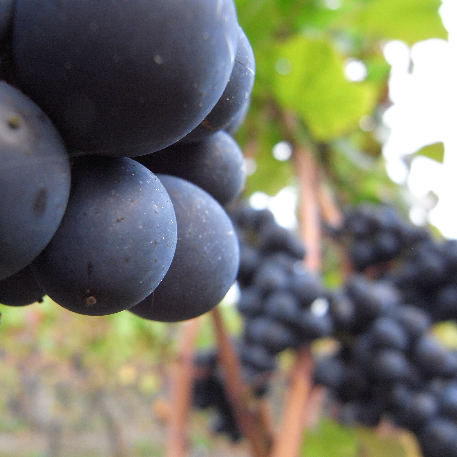
Harvest on 22nd September 2009
2009’s record-breaking vintage will remain etched in our memories forever. The amount of sugar in the grapes was well above average thanks to the magnificent weather we enjoyed and which many of you may well also remember.
After a cold and snowy winter, spring came quickly in 2009 thanks to relatively mild, even summery, temperatures. The first buds were visible on the vine around April 13, which is to say about a week earlier than the norm. Flowering came early too, around June 9, thanks to a month of May during which temperatures often soared past 30°C (86° F). The summer was hot and dry, albeit not spectacularly so, and there was less rain than usual except during July. This eased problems with mildew and oidium, and, since vegetative growth stopped naturally earlier on, it also increased sugar levels at the end of the cycle. Harvesting began on September 22, and ended on October 5, without a single day of rain!
And now, we are happy to say that we are looking at a beautiful year – wines with a remarkable constitution that have a welcome freshness to them thanks to the simple, natural winemaking methods we opted for in an attempt not to lose any of the balance, tension, class and generosity inherent to the vintage.
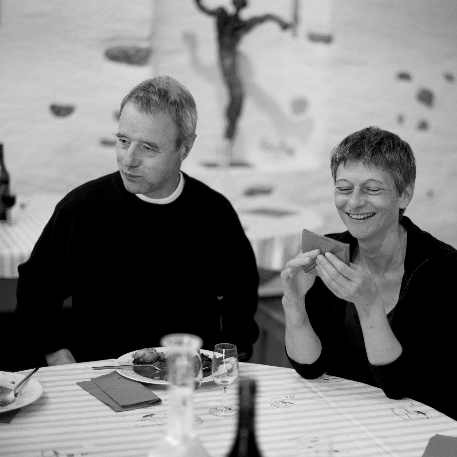
Harvest on 5th October 2010
We are delighted to present our 2010 vintage. Like the 2009 vintage, it benefitted from magnificent weather conditions albeit very differently.
- By comparison to 2009, the first shoots in 2010 made their appearance several days later.
- The month of May, while not beating any records for high temperatures, nevertheless saw very harmonious vegetal development in the vineyards.
- In June, the weather took a turn for the worse. It rained nearly every day, and this delayed and disturbed flowering. The fruit set was not completed and the grape bunches had a sparseness about them that indicated that the 2010 harvest would be smaller than the previous year’s.
- Fortunately, a heat wave in July had a very beneficial effect on the vines and any dryness was slowed by rains at the beginning of August.
- It was hot and dry in September, when the vine trunks stopped developing—this stimulated the accumulation of sugar in the grapes.
- We began harvesting on October 5, late by comparison with 2009. However, because of the lower yields, the grapes showed excellent levels of maturity. The skies were sunny and blue during the whole harvest period, offering textbook conditions for the old saying ‘’vigneron bronzé, signe de qualité’’—a tanned winegrower is a sign of a good year.
You’ll find the result of our meteorological and viticultural adventures in your wine glass, with fruity, lively, dynamic whites that will cellar-age well, and structured, full, spicy reds with refined, well-integrated tannins. As always, our main focus throughout the entire wine making process was maintaining the right balance of all those rich components that distinguish the very finest pure, light, wines.
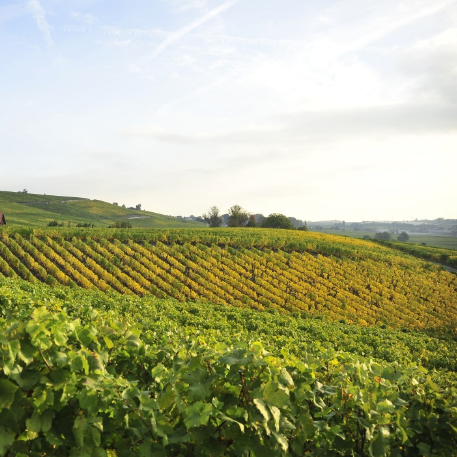
Harvest on 19th September 2011
We are delighted to present our 2011 vintage, which is marked by last winter’s abnormally mild weather – weather that carried over into the rest of the season.
- The first shoots appeared nearly two weeks earlier than they would have in a normal year. This was the earliest bud break in the last 25 years.
- This significant advance became even more marked during April and May, when summer-like weather conditions prevailed.
- The hot spring fuelled an extravagant growth of vegetation – the vine runners grew as much as 5 cm (1.96 in.) or more in a day. Sometimes it seemed as if they were growing in front of our eyes!
- Rain in the month of July checked the proliferation of growth somewhat and was overall beneficial as the vines were beginning to get thirsty.
- Due to the exceptional summer, the grapes reached beautiful maturity early on, which meant we could begin harvesting on September 19. Harvesting was completed on October 10.
As for raising the wine – we let nature take its course, so that our terroirs and grape varieties have free reign to fully express their personalities. Already, we’re seeing Chasselas characterized by minerality, yet fruity and fresh; complex, graceful Pinot Gris; subtle, elegant Pinot Noir…
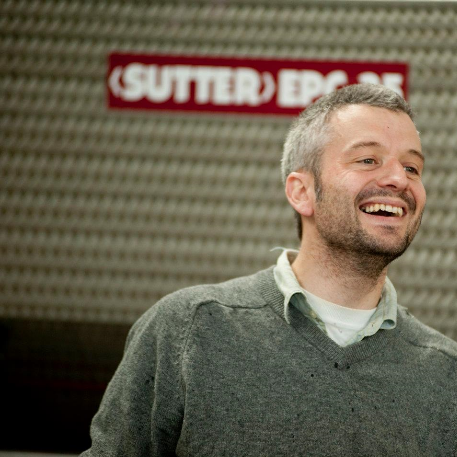
Harvest on 4th October 2012
Let’s take a closer look at the 2012 vintage:
- The frigid temperatures during February, while not very kind to winegrowers’ hands (!), did not damage the vines.
- After a normal bud break mid-April, and a fairly warm May, June weather was gloomy.
- Flowering was disturbed by this unstable weather – and the result was lower yields for most varieties.
- After a short dry spell in July, grape maturation was optimal thanks to a return to favorable weather.
- During the summer months, downy and powdery mildews are virulent, but happily our vines are very resistant thanks to being treated for the 12th year in a row with natural products that have proven remarkably effective.
- There was some rain during the harvest, but temperatures remained brisk which calmed out fears – and the grapes were beautifully healthy.
Crucial during the winemaking phase is preserving the essence of what the soil gives us: not being afraid of taking risks, trusting to instinct, while respecting the grape must and guiding its natural processes as delicately as possible.
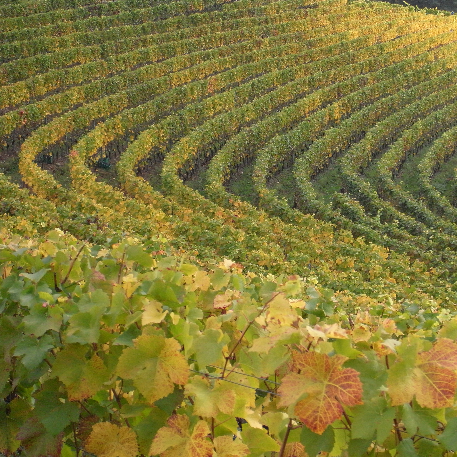
Harvest on 14th October 2013
In our entire experience of winegrowing our vineyards have rarely been subject to as intense environmental pressure as they were in 2013.
But the picture is far from black – thanks to constant care and attention the vines found the resources they needed to counter the vagaries of climate.
- Winter conditions persisted for much of the spring, and the weather remained bad until June. This disturbed the flowering of the vines and the resulting shatter and millerandage meant a smaller harvest. That could also be considered a piece of luck, however, as what grapes there were subsequently had an easier time maturing on the vine.
- Summer weather conditions were not serene, mainly because of two hail showers. Thankfully, only a few parcels suffered damage (of 20% to 30%) – one of the advantages of an estate made up of vineyards dotted here and there…
- August, which looked as if it would be a quiet month with mild temperatures, didn’t turn out that way. This was a shame, since the stock had nearly caught up with the lateness it had suffered due to poor spring weather conditions.
- Fall conditions were erratic, alternating between rain and hot and cold spells.
- We started harvesting on October 14 and – urged on by the fact that the grape skins were undergoing rapid change — grape-picked virtually non-stop until October 28.
What can be said about the 2013 vintage except that the small yields, weaker levels of alcohol and well-supported acidity presage crystalline wines that are very much in line with what we aim to produce.
Our biodynamic cultivation method paid off with mature grape seeds and deliciously fruity must. Right now, the wines are very sensuous, clear and pure. Factors that the 2013 vintage has in common with older vintages such as 1995 or 1998 make it possible to affirm that this vintage will offer stimulatingly fresh and powerfully mineral wines that appeal to true wine lovers and connoisseurs.
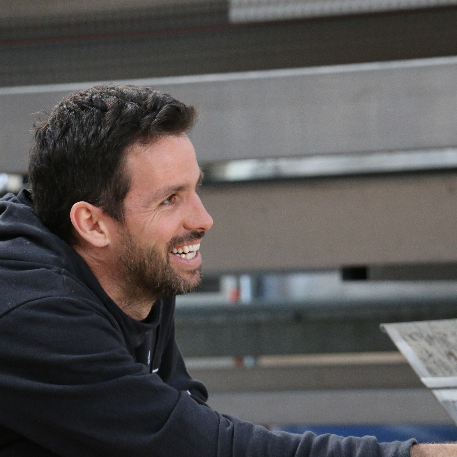
Harvest on 29th September 2014
After more than thirty vintages vinified at the Domaine, the situations are always new: to adapt is a pleasure and a need renewed every year.
Let’s look at what were the characteristics of the 2014 vintage:
- A mild spring encouraged bud burst, showing its first leaves 10 days ahead of average.
- Fairly cool, May and June do not favor flowering: we know that the vine does not affect the climatic extremes. The advance is only three days!
- July, very wet, forced us to be very vigilant. But our experience of 15 years in biodynamics allowed us to pass the course without damage.
- Finally, in August, at veraison (when the grains become translucent and start to have sugar) the health of our vines is perfect and the evolution of the maturation very promising.
- Despite the Drosophila “suzukii” which gave us more fear than harm, we were able to start the grape harvest without any problems on September 29th, and finish on October 15th. Either quite average dates, and more advance at all!
This mild weather in spring, difficult in summer, and sunny in autumn is well suited to the vine and allows us to obtain remarkable wines by their crystalline freshness, their aromatic complexity, and their mineral structure. Keeping most of what nature gives us is a philosophy that is important to us and that we like to share.
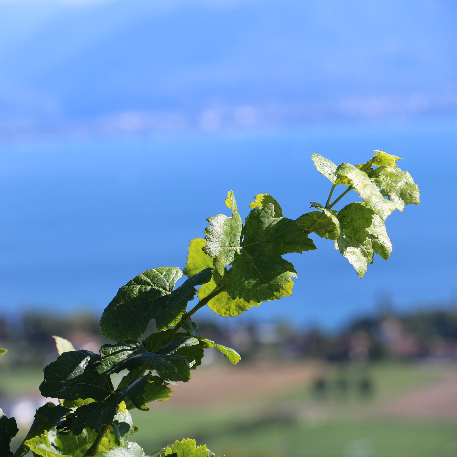
Harvest on 18th September 2015
How to tell you about the 2015 vintage without having stars in your eyes?
Such a year represents the dream of every winemaker! And this dream began, logically, in the natural dynamics that developed in the vineyards …
Around April 20, the buds burst. A little late. But the delay is quickly caught up, thanks to four consecutive months of heat, above the average of the last ten years. July is even the hottest month since 1864!
At the moment when the growth reaches its paroxysm, the branches grow by 7 cm per day … At this rate (5 mm per hour) an attentive observer could see the vine grow!
Then … everything is calm. The drought is starting to be felt, especially in young vines where the root system is not yet deep enough.
But on arrival, the health of the grapes is perfect! Maturation is ahead, and idyllic harvesting can begin on September 18, ending in early October.
In the vineyard, the conditions were simply ideal. And our approach, which consists of listening to and respecting the natural biodynamics of soils, plants and human labor, has proved particularly fruitful. So stay … the work in the cellar!
With magnificent grapes, which deserve reflection, attention, respect. So we took risks and worked … to do nothing! That is to say: not to intervene, inadvertently, in what nature had delivered us. Concretely, it has asked us to trust the natural yeasts already present in the environment, to let them express the full potential of the soil – by adding a strict minimum of sulfur, only in the spring, and leaving the wine to rest for a long time on its fermentation lees …
And the least we can say is that nature has given us this confidence in a particularly generous way: the wines are marked by solar aromas, with a high purity of expression, carried by suave and dynamic structures.
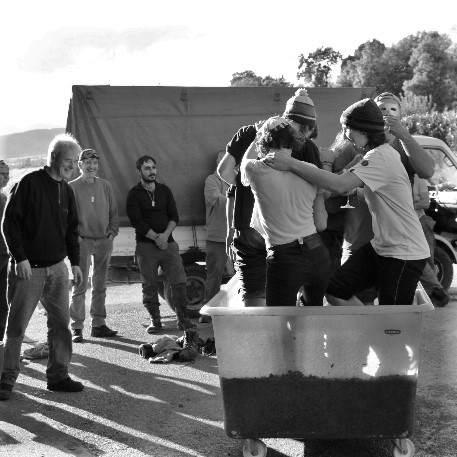
Harvest on 5th October 2016
2016 will be remembered for its very contrasting conditions.
The first leaves showed the tip of their nose around mid-April with a mild and rainy spring. A return of the cold early May made us fear frost. Fortunately, Lake Geneva played a good role as a regulator and saved our harvest. The rains of May and June forced us to constant surveillance and slight but repeated interventions.
Thanks to our biodynamic care for 17 years, our vines resist better to difficult conditions. Our living soils, with a diversified fauna, have well absorbed abundant and unusual showers.
High temperatures in July favored rapid plant growth and vigorous growth. In August and September, heatwave and drought filled the gap of the first weeks of the season and were conducive to the good maturation of the different grape varieties. The harvest began under the best auspices on October 5th. The positive experiences of previous years have allowed us to trust our grapes. Concretely, we remained minimalist in our interventions in the cellar: a slow pressing, no sulfur, then yeasts taken from several plots of the Estate that gradually turn sugars into alcohol. Wine can express all the magic of the place where he was born. This magic, we feel in the fruity, juicy, generous, natural and fresh expression of our wines.
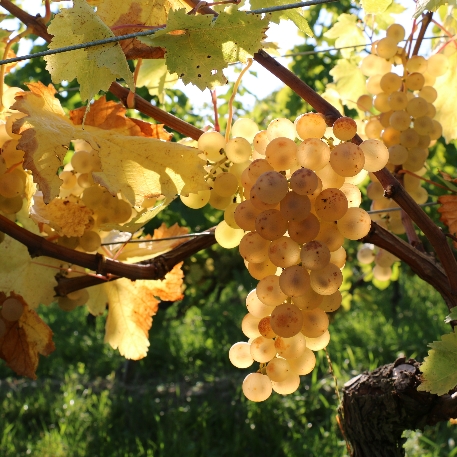
Harvest on 12th September 2017
The vine woke up particularly early in 2017, so the first leaves were very sensitive to spring frost and many wine regions were affected. Thank you lake, we escaped this disaster.
The rest of the wine year has given new life to the winemakers. Little rain, so little humidity and pressure of fungal diseases, without however that the vine lacks water and is stressed.
The picking was early, from September 12th. The maturity of the berries was therefore made on long days, unlike last year when we started almost a month later! Photosynthesis is more important, therefore, the sugar level is higher. In itself, a reasonable harvest, a beautiful maturity, and freshness.
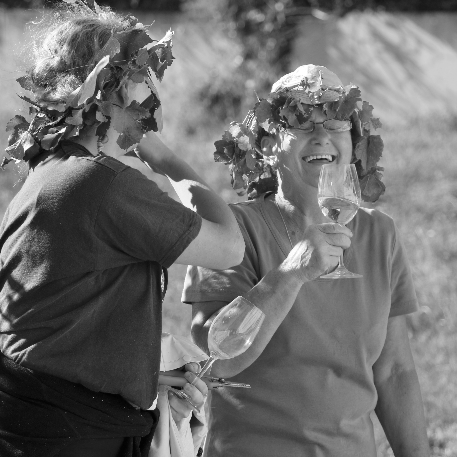
Harvest on 10th September 2018
The budding date predicted a normal year, with harvest in October, as usual in our region. But the time until the flowering has rarely been so short: only 49 days against 62.5 days on average thanks to hot and sunny weather!
So we started picking on September 10, with grapes of absolutely irreproachable quality and temperatures still frying 30 degrees. It was one of the nicest and longest summers ever recorded.
The fermentations went well. The last sugars turned into alcohol. Crucial stage, revealing the subtleties of the grape. Out of respect for work in the vineyard, we vinify in the same state of mind. In particular, by the use of native yeasts or the absence of sulfur, which makes us live adventures sometimes surprising … The tasting is daily. We monitor the wines with curiosity and interest, which allows us to gently guide each tank through temperature controls or transvases.
We are looking forward to seeing you again at our cellar to taste this 2018 vintage, which offers wines with body and very nice concentrations of aromas.
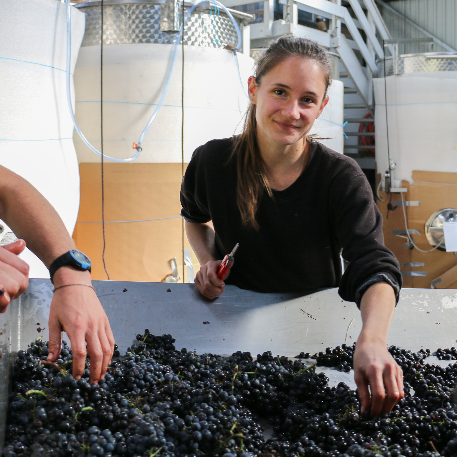
Harvest on 23rd September 2019
Flowering was normal, around 20 June 2019, very soon after the women’s strike. Spring was somewhat humid, but beautiful weather in August and September encouraged perfect ripening of the grapes.
In the higher areas of Féchy, 15% of the vines suffered hail damage, but luckily before the veraison so the berries dried and fell. The grapes thus remained very healthy.
We took a long time tasting the grapes in the vineyard in order to choose the best possible picking time for every grape variety on each of our 38 vine parcels. We began harvesting 23 September, making this pretty much a classic growing season.
The grapes went through two selections, once while on the vines, then on the sorting table, to make sure they were perfect. And then it was up to us, in the cellar, to know how to interpret, as best we can, what they have given us. Without sulphur, without added yeast, with no additions at all, we need to taste virtually every day to ensure that the wine undergoes a gentle yet precision-driven development.
A vintage with lovely balance between body and structure.
A vintage very much up to the high standard of the Fête des Vignerons that was celebrated during the summer.

Harvest on 7th September 2020
The 2020 vintage began with a very favourable spring. It was in the middle of the flowering period that cold and wet weather caused an unusual number of flowers and berries to drop off.
Then the weather was good and there was water at the right times.
As a result, the harvest started very early, on 7 September. Small grapes with a high concentration give birth to intense aromas and a mouth with a preserved vivacity.
When nature does things well, everything is easier.
Bottling was delayed to ensure careful maturation in line with the maturity of the different terroirs.
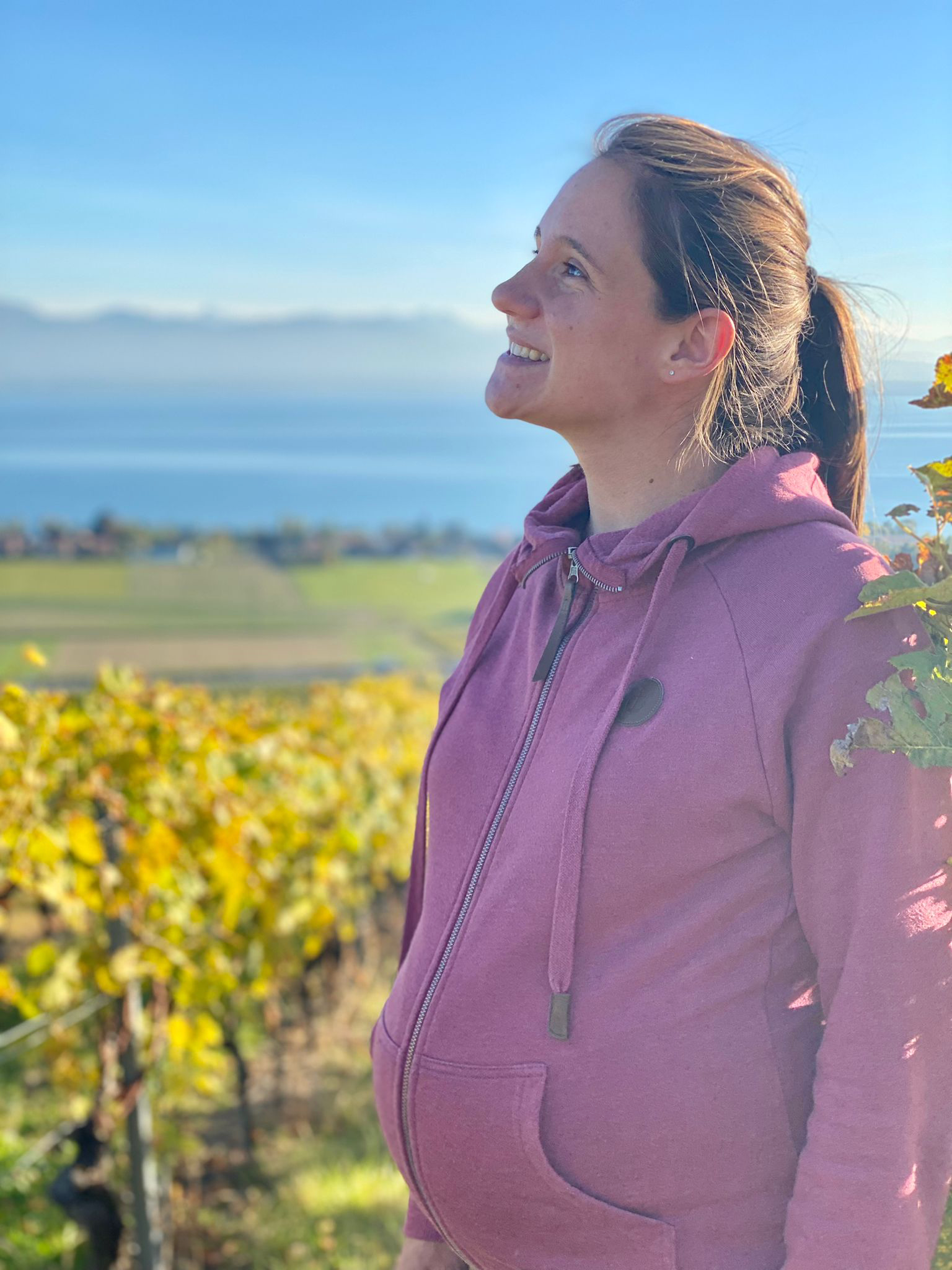
Harvest on 27th September 2021
We escaped the frost episodes in April, but the heavy rains in June and July brought an important pressure of mildew, making 2021 a particularly difficult year.
After a favorable end of season for berry ripening, we started the harvest on September 27th with Pinot noir at 95°Oe, then Chasselas around 77°Oe.
Even if the volumes are slightly below average, 2021 promises to be a very good vintage: structured (low harvest), fruity (fresh year), crystalline (good noble acidity). As if the vines had struggled to give the best of themselves.
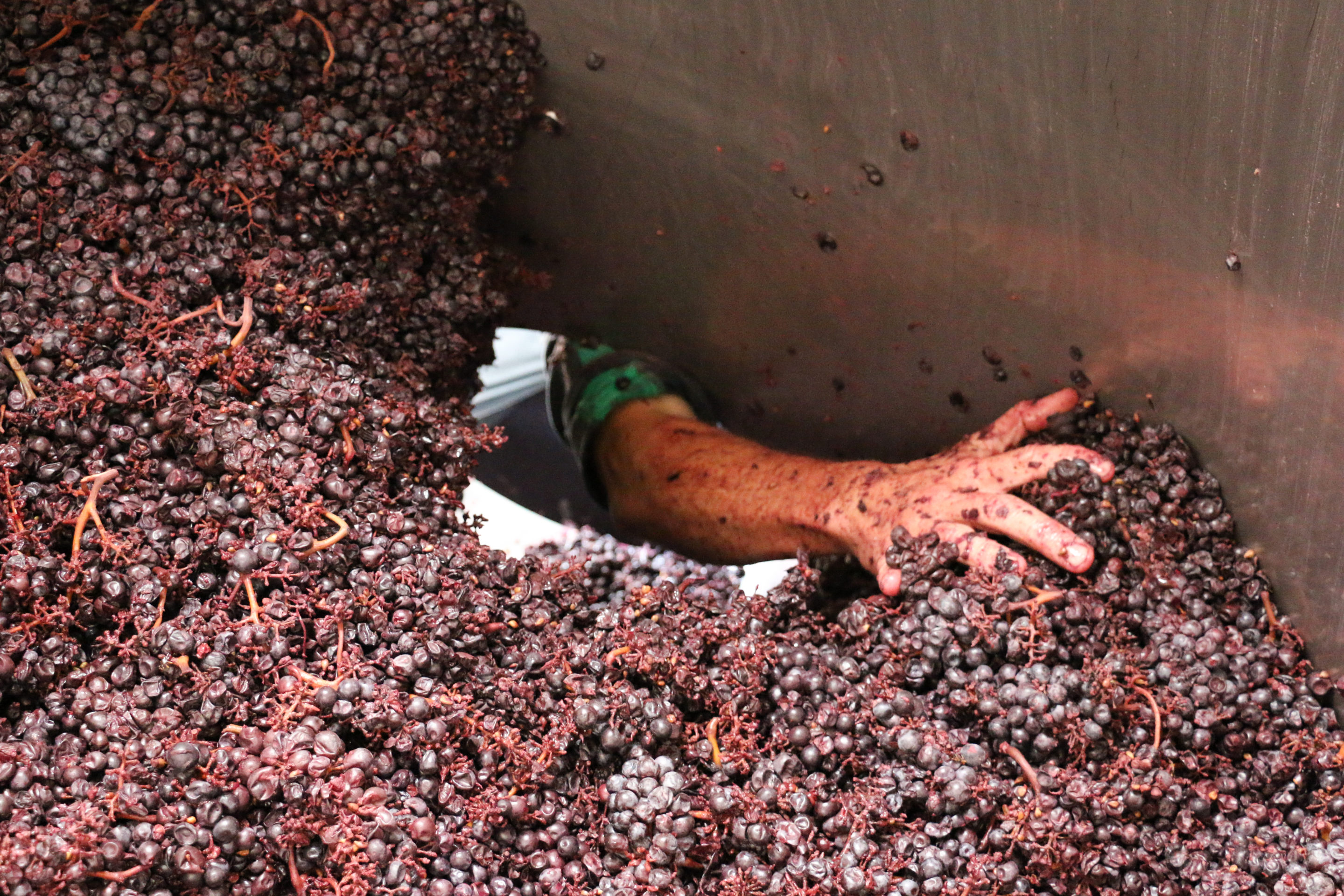
Harvest on 29th August 2022
In 2022, the weather was exceptionally hot and dry all summer.
The chasselas started flowering at the end of May. We feared the heavy storms and at the same time waited impatiently for the rain. Between the beginning of May and mid-August, it rained 150mm, which is 4x less than in 2021 at the same period (it is true that in 2021… it had rained particularly heavily!).
We had to adapt our cultivation methods, for example by braiding the branches rather than shearing them and by leaving more ” umbrella ” leaves in the grape area. In fact, the leaves provide shade and removing them in such heat strains the plant. In addition, we laid down the grass and did not mow it. This protects against evaporation and keeps the soil moist.
Shortly before the harvest, we worked hard to remove the few bunches of grapes that had blocked their ripening due to the lack of water and that remained acidic, by passing over each plot with a loyal and expert team.
In the end, apart from the very young vines and a few more sensitive areas, the vines proved to be incredibly resilient to the drought.
We started harvesting on the 29th of August with our young Pinot Gris vines. This was unprecedented in Féchy. The berries were slightly smaller, but very healthy and particularly concentrated in flavour. These small yields allowed us to harmonise the ripeness of the skins and the sugars.
2022 shows great taste, body and concentration.
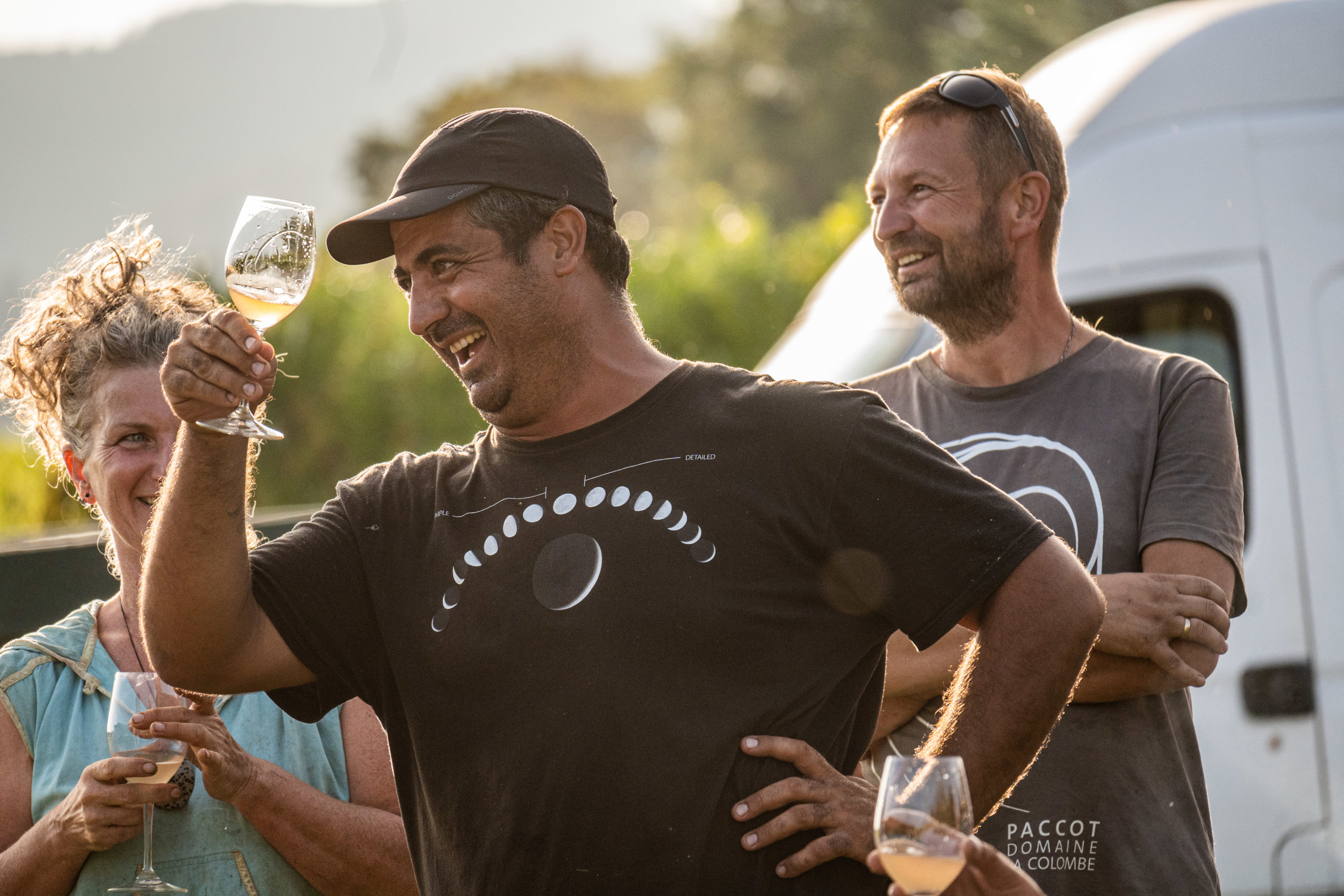
Harvest on September 12th 2023
Spring 2023 is characterized by frequent precipitation. Unfortunately, where ther is rain, there is mildew pressure, a fungus which has caused some damage to young leaves and future grape clusters.
Luckily, in the beginning of June, the weather changed, and flowering took place in the best of conditions. The vines grew quickly, we wove the branches on the majority of our domaine. A colossal job that prevented the branches from falling without having to shear the apices. We thus limited the stress of the plant, promoted the rooting and maturation of its babies, the grapes.
The season continued with several virulent windstorms, fortunately without damaging the vines.
It’s time for the heat… In August, there was a heatwave, with temperatures reaching 36°C. However, on August 16th a nice and welcoming rain caused temperatures to drop and slowed down the ripening of the grapes. We could, therefore, start the harvest on September 12th with our loyal team of pickers.
Each vintage has its own twists and turns, its unique characteristics, which each time force us to react, understand, and… remain creative.
We were finally able to press healthy grapes, which gave us juices packed with flavour and joyful drinkability.
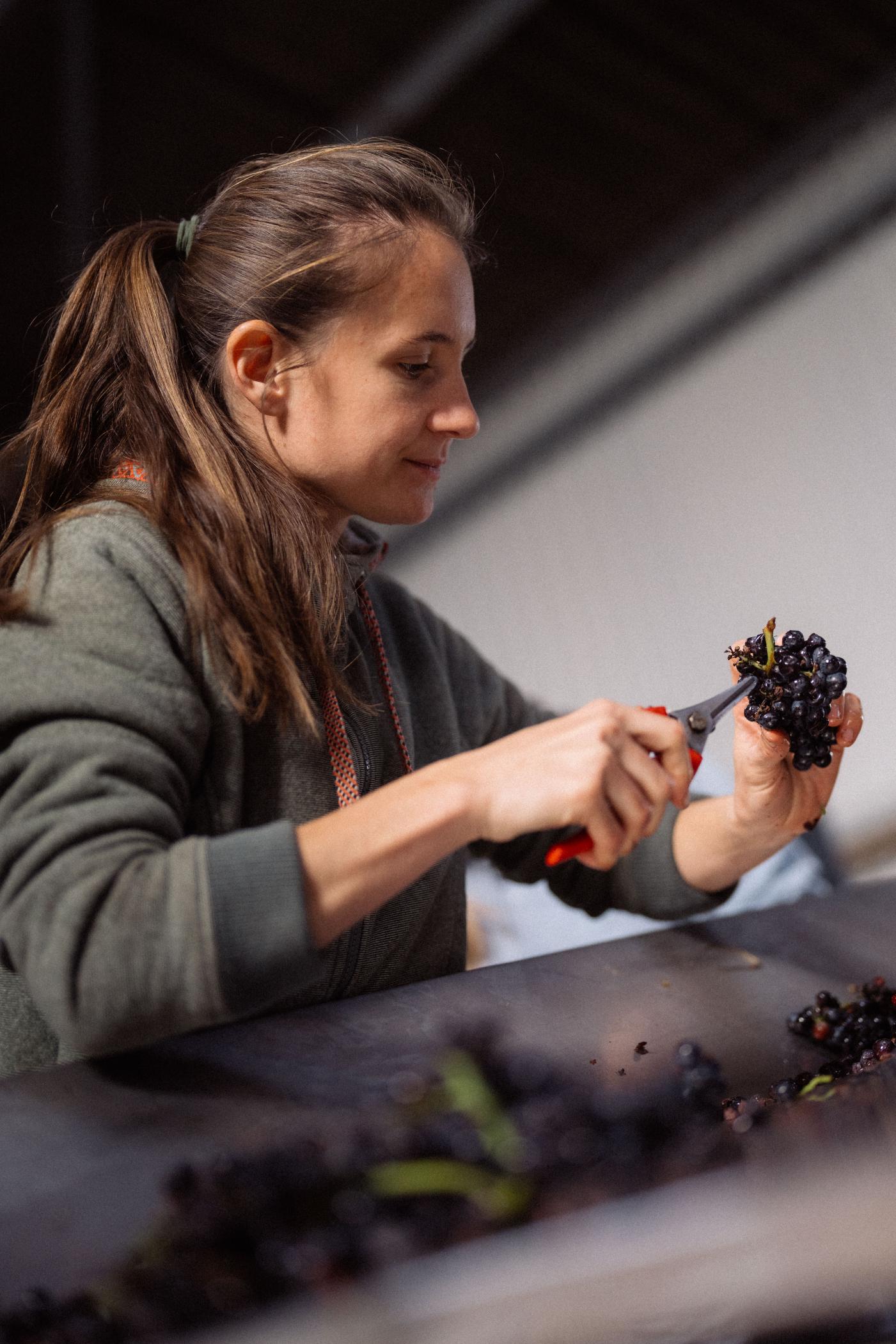
Harvest on 24th September 2024
Regular rainfall from November to February replenished the water tables, which were in dire need of replenishment.
The winter was particularly mild, which prevented the from freezing of the ground. This is positive for us, as it decompacts the soil. On the other hand, the seeds we sowed grew well. An alternative that helps us structure and nourish the soil.
April was a month of contrasts.
With summer temperatures in the first fortnight (even 26°C recorded in Féchy!), the vines budded early and developed well.
But the second fortnight quickly brought a halt to this advance with winterly temperatures. We came close to a catastrophe with temperatures close to zero Celsius between April 18th and 23nd. Thanks once again to the lake and the hillsides, we saw very little spring frost damage in our region.
Following this shock, the vines took some time to recover. We lost the lead we had at bud-break, and reached full flowering around June 12, heralding a classic vintage.
There were 180 mm of rain in May alone. Mildew, which loves these conditions, had a field day. Fortunately, our strong and resilient team is strong and we fought back with hard work.
But, one has to admit that water is life; nature was glowing, forests radiant, slopes green, everything grew in abundance. Which kept us busy… mowing the grass, hand-trimming, shearing, …
132 mm of rain again in June. Remember the torrential rains that caused the Morges River to overflow its banks? And the violent thunderstorms that caused flooding in Valais, Graubünden and Ticino. In Féchy, none of this happened… It’s true that at this time of year, we had hail, particularly on our Girarde parcels (30%) and Petit Clos (around 10%). Fortunately, we were more frightened than hurt! The berries, still sugar-free, healed, dried and continued to ripen.
It was a year of “What if the sun didn’t come back?”, but in the end, we’re very happy with it – our hard work paid off in spades!
The harvest began on September 24th … with our Pinot Gris and its delicious little berries, the juicy Chasselas and the Savagnin Blanc, as golden as the sun.
Let time help us raise our precious children. 2024 will be a fresh vintage, with finesse and juicy fruit. A well-deserved vintage!
Photo by Maco Lopez

